Ah, the age-old question that every Persian cat owner has asked themselves: do Persian cats scratch furniture? It’s a common dilemma for those of us who love these majestic creatures.
On one hand, we adore their luxurious fur and regal demeanour. On the other hand, we cringe at the thought of them shredding our couches to pieces.
Are you considering adopting a Persian cat but worried about the potential damage it may inflict on your furniture? Fear not, my fellow feline enthusiasts!
In this blog post, we will explore the common misconception that Persian cats are notorious for scratching furniture.
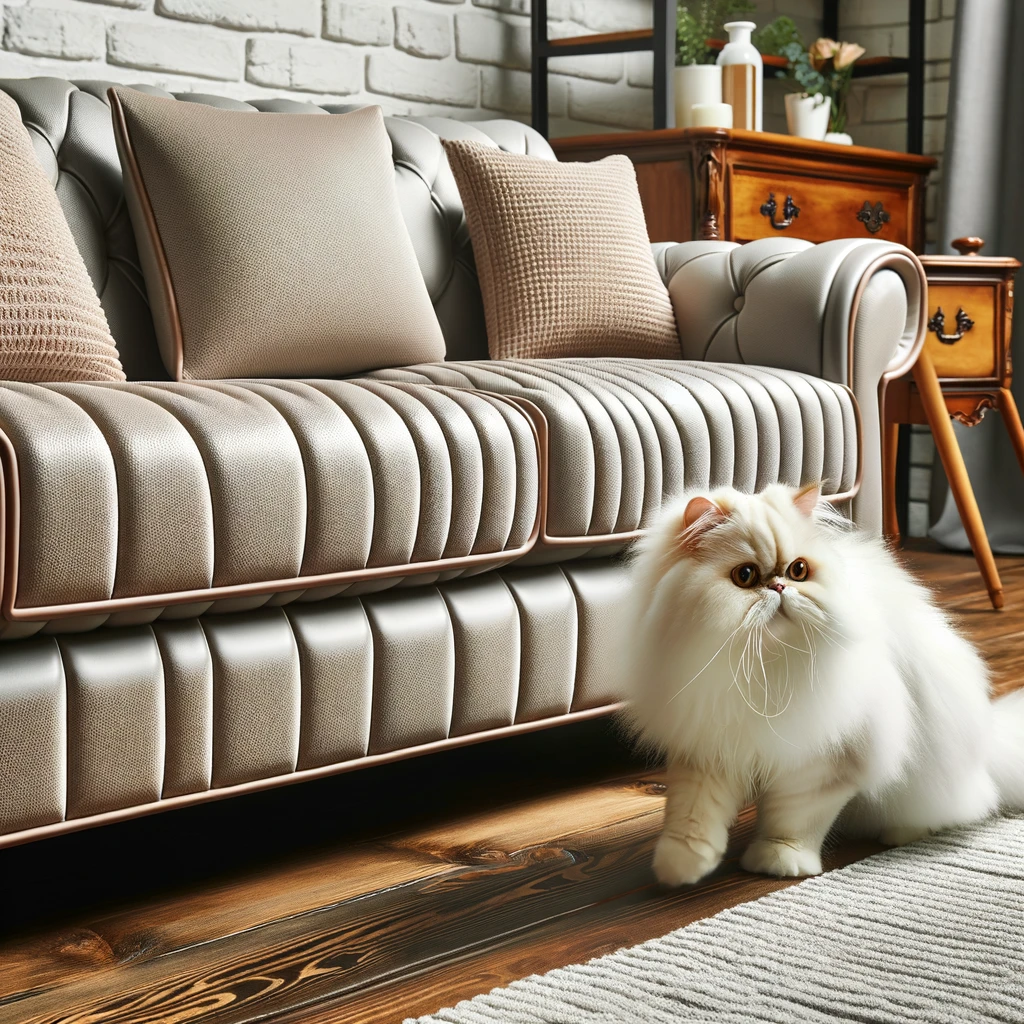
Do Persian Cats Scratch Furniture?
Yes! Persian cats do scratch furniture, unfortunately! When it comes to Persian cats, one cannot ignore their natural instincts, especially when it comes to scratching furniture.
These luxurious felines might look like they belong on a royal throne, but deep down, they are still wild animals with an innate desire to scratch and sharpen their claws.
It’s not that they hate your furniture; it’s just that scratching is their way of marking territory and keeping their claws healthy.
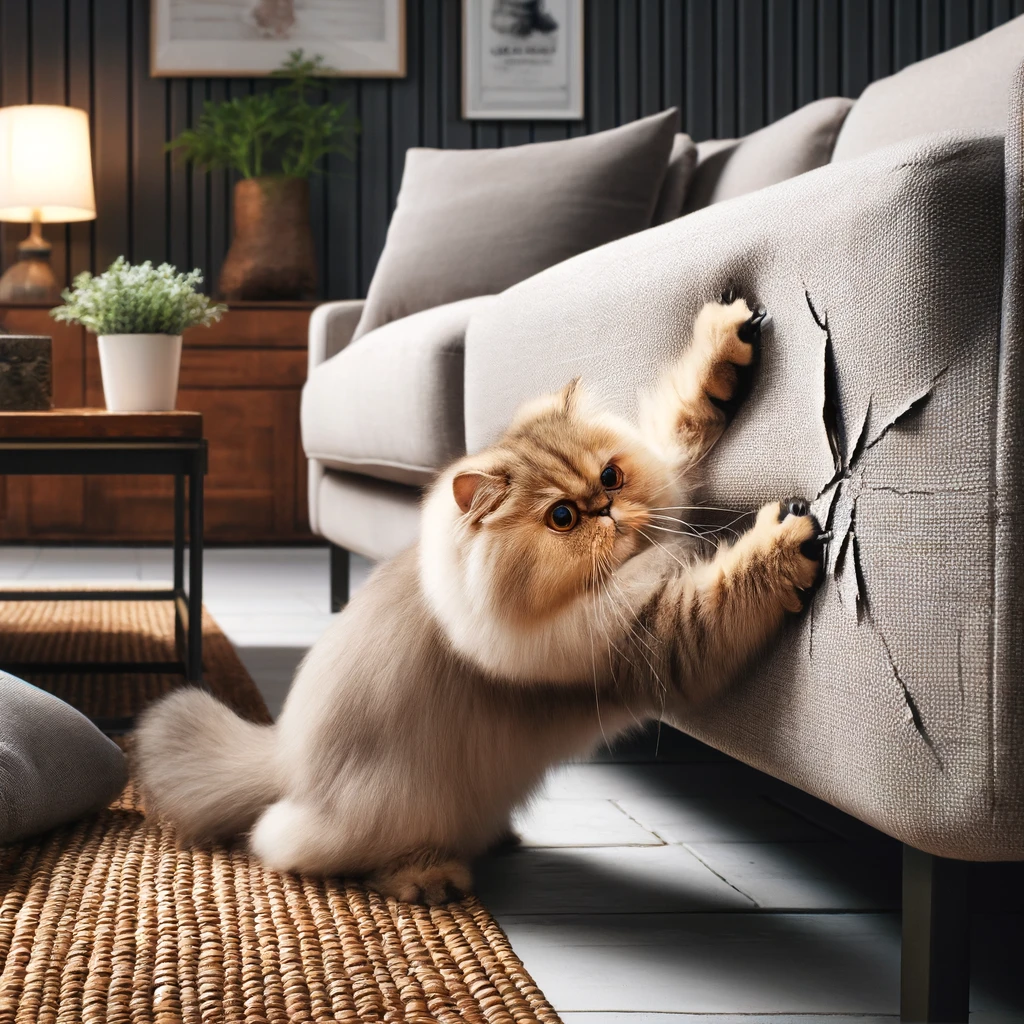
Persian cats have been bred for centuries as indoor pets, and while this has made them more docile than their wild ancestors, the urge to scratch is still present.
They have retractable claws that need regular exercise to stay strong and healthy.
So even if you provide them with a scratching post or pad, chances are they will still find your sofa or curtains irresistible. But fear not!
There are ways to protect your furniture without depriving your furry friend of its natural instincts.
8 Reasons Why Your Persian Cat Maybe Scratching Furniture
Understanding feline behaviour is crucial when it comes to preventing a Persian cat from scratching furniture.
To prevent your Persian cat from ruining your furniture, it’s important to understand why they scratch and provide them with appropriate scratching surfaces.
1.Instinctual Behaviour
Scratching is an instinctual behaviour for cats, including Persian cats. Scratching helps them to mark their territory and communicate with other cats through scent marking. It also helps them to stretch their muscles and maintain healthy claws.
In the wild, cats would scratch trees or other natural surfaces to sharpen their claws and remove dead layers from them.
However, in a domestic setting where there are no trees or natural surfaces available, they may turn to furniture as a substitute.
2. Boredom
Persian cats are indoor pets that require plenty of stimulation and entertainment to keep them happy and healthy. If they do not have enough toys or activities to keep them occupied, they may resort to scratching furniture out of boredom.
To prevent this behaviour, pet owners need to provide plenty of toys and playtime for their Persian cats.
Interactive toys such as puzzle feeders or laser pointers can help keep them mentally stimulated while also providing physical exercise.
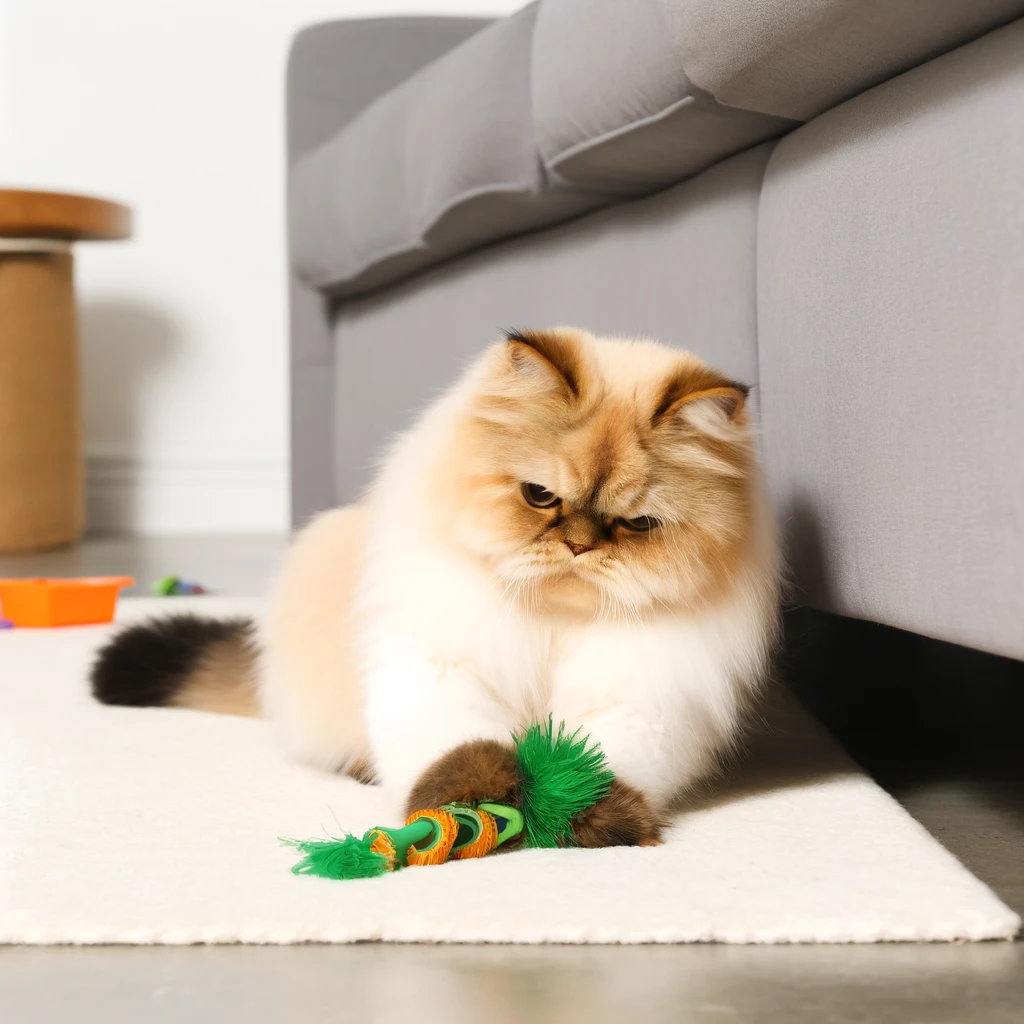
3. Stress or Anxiety
Like humans, cats can experience stress or anxiety which can manifest in destructive behaviours such as scratching furniture. Changes in routine such as moving house or introducing a new pet into the household can cause stress for your Persian cat.
To reduce stress levels in your cat you should ensure that they have a safe space where they feel comfortable and secure such as a cosy bed or hiding place where they can retreat when feeling anxious.
4. Lack of Scratching Posts
Cats need an appropriate place to scratch, and if they do not have a scratching post or other designated area, they may turn to furniture as a substitute.
Providing your Persian cat with a scratching post can help redirect its behavior away from the furniture.
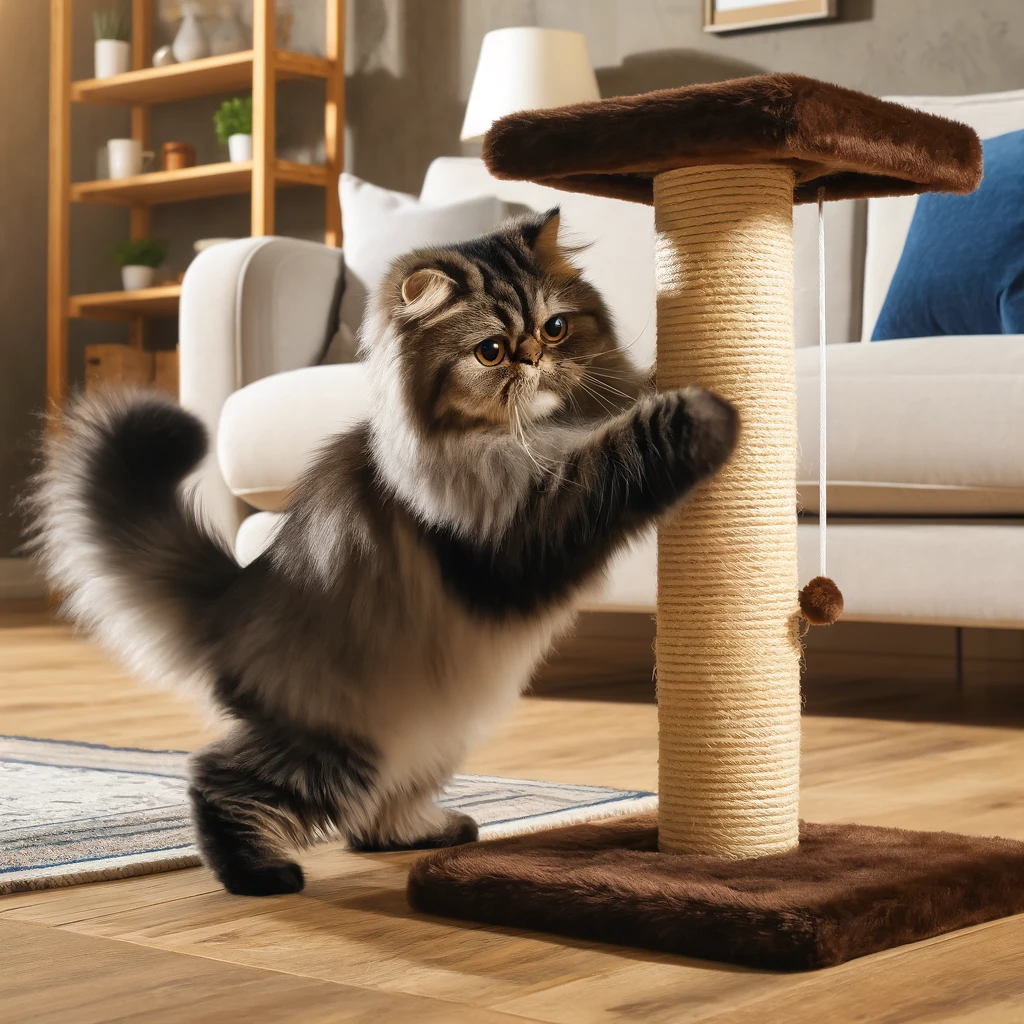
5.Claw Maintenance
Scratching also helps maintain a cat’s claws by removing the outer layer of dead skin cells from their nails, revealing sharp new claws underneath.
If your Persian cat does not have access to appropriate scratching surfaces, it may lead to overgrown claws which can cause discomfort or even injury.
6. Attention-Seeking Behavior
Cats crave attention from their owners and may resort to negative behaviours such as scratching if they feel neglected or ignored.
Cats also use scratching as a way of communicating with humans and other animals. They may scratch near you or meow loudly while doing so as a way of getting attention or expressing affection.
7. Medical Issues
In some cases, Persian cats may scratch furniture due to medical issues such as allergies or skin irritations. If your cat is scratching excessively, it is important to take them to the vet for an examination.
Allergies can cause itching and discomfort which may lead your cat to scratch at furniture in an attempt to relieve the itchiness. Skin irritations such as fleas or mites can also cause excessive scratching.
8.Marking Territory
Another reason cats scratch is to mark their territory. When they scratch, they leave behind visual marks as well as scent markings from the glands in their paws. This lets other cats know that this area belongs to them.
The Importance Of Providing Scratching Posts
Persian cats are notorious for their love of scratching furniture. They seem to have an insatiable desire to claw at anything and everything, leaving behind a trail of shredded fabric and ruined upholstery.
There is a solution to this pesky problem: providing scratching posts.
Now, I know what you’re thinking. Why should I spend my hard-earned money on a fancy scratching post when my Persian cat will just ignore it and continue to destroy my couch?”
Well, let me tell you, dear reader – the importance of providing scratching posts cannot be overstated. Firstly, scratching is a natural behaviour for cats.
It helps them stretch their muscles, shed old claws, and mark their territory with scent glands in their paws. By denying your Persian cat the opportunity to scratch on an appropriate surface like a scratching post, you’re essentially forcing them to resort to destructive behaviours like clawing at furniture or carpets.
But it’s not just about preventing damage to your home furnishings – providing scratching posts can also improve your cat’s overall health and well-being.
Regular scratching can help relieve stress and anxiety in cats by allowing them to release pent-up energy and frustration.
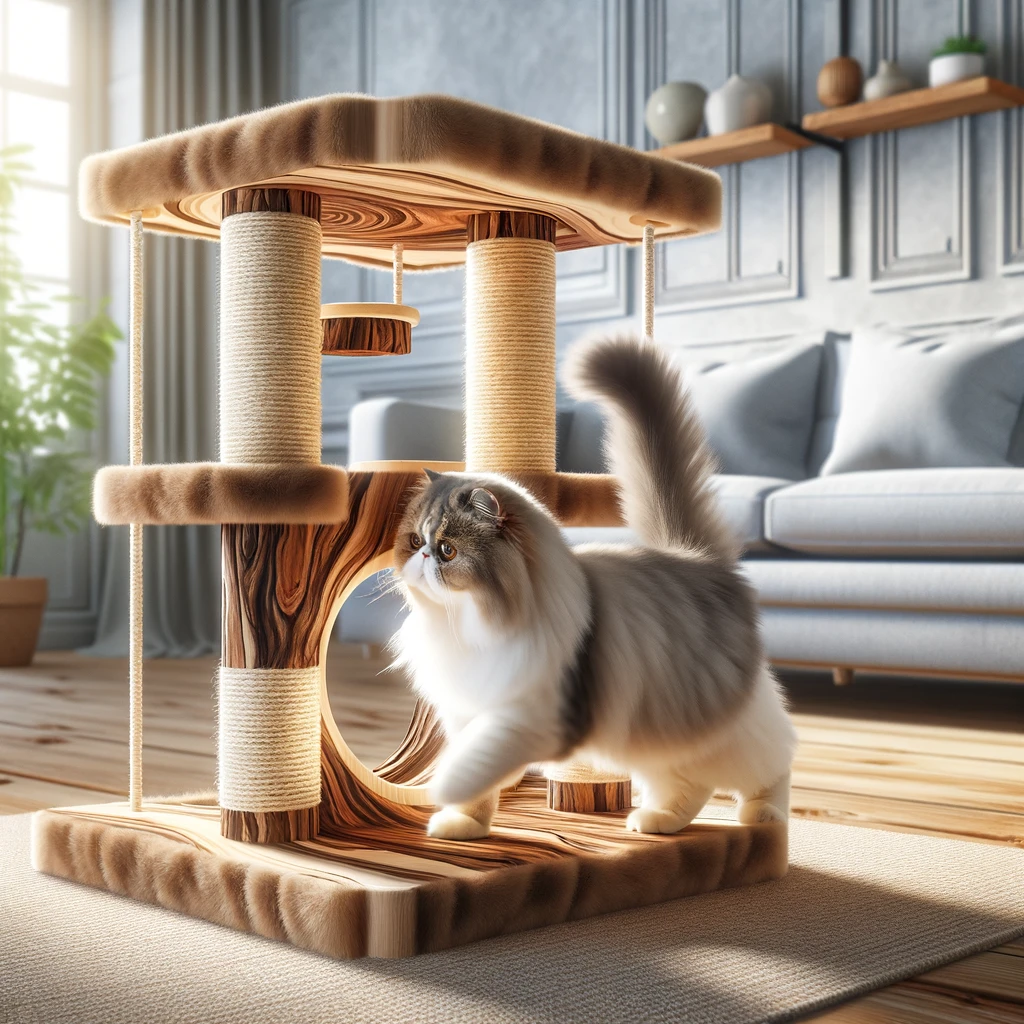
Plus, let’s face it – watching your Persian cat go nuts on a good-quality scratching post can be downright hilarious. There’s something about the way they contort their bodies and dig their claws in that never fails to bring a smile to our faces.
Of course, not all scratching posts are created equal. It’s important to choose one that meets your cat’s needs – whether that means a tall vertical post for stretching or a horizontal one for lounging and playing.
Some cats prefer materials like sisal rope or cardboard while others may prefer carpet or wood.
And don’t forget about placement! Scratching posts should be positioned in areas where your cat likes to hang out – whether that’s near a sunny window or in their favourite napping spot.
If you have multiple cats in your home, you may need to provide more than one scratching surface to prevent territorial disputes and ensure each cat has access to an appropriate place for scratching.
Additionally, you can try rubbing some catnip on the scratching post or using toys on top of it as an incentive for your Persian cats.
By making the scratching post a part of your cat’s daily routine, you’ll increase the likelihood that they’ll use it instead of your furniture.
Providing scratching posts is not just a matter of protecting your home from destruction – it’s also about promoting your Persian cat’s physical and mental health.
So go ahead and indulge in that fancy scratching post you’ve been eyeing – trust me, it’ll be worth it when you see the joy on your cat’s face as they sink their claws into it for the first time.
10 Tips to protect furniture from being scratched by Persian cats
Tip 1: Provide Scratching Posts
One of the most effective ways to prevent your Persian cat from scratching your furniture is by providing them with a scratching post.
Cats have a natural instinct to scratch, so giving them an appropriate place to do so will help redirect their behavior away from your furniture.
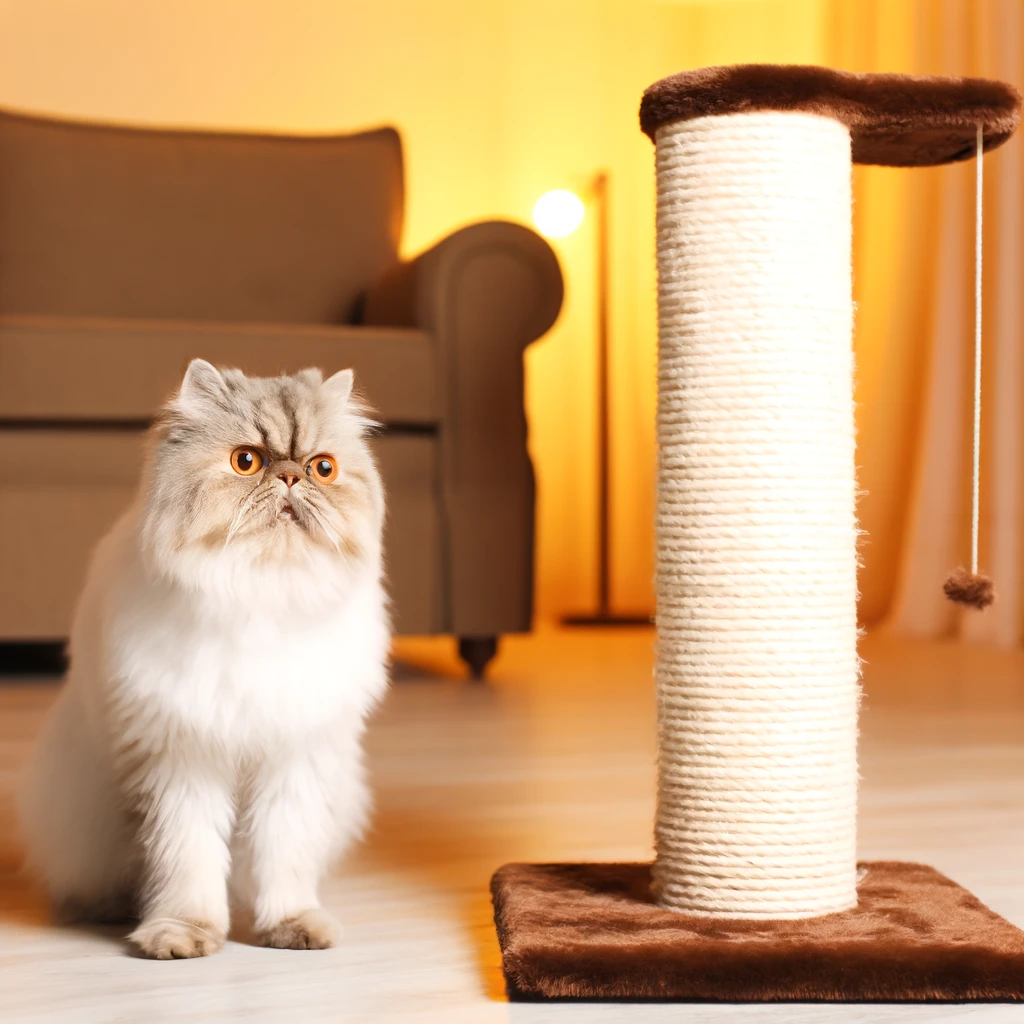
Tip 2: Use Soft Paws
Soft paws are small plastic caps that fit over the cat’s claws, preventing them from causing any damage when they scratch. These caps are easy to apply and come in various colors and sizes.
Tip 3: Trim Their Claws Regularly
Another way to minimize damage caused by Persian cats’ claws is by trimming them regularly. This will not only reduce the likelihood of scratches but also keep your cat’s claws healthy and prevent them from getting too long and uncomfortable.
Use a pair of specialized cat nail clippers and be careful not to cut too close to the quick (the pink part inside the claw). If you’re not comfortable doing this yourself, take your cat to a professional groomer or veterinarian.
Tip 4: Cover Your Furniture
Covering your furniture with blankets or slipcovers is an excellent way to protect it from scratches caused by Persian cats. Not only does this provide a barrier between the cat’s claws and the furniture, but it also makes cleaning up any messes much easier.
For those who want a more stylish solution, consider using decorative tape or vinyl stickers on the corners of your furniture.
This not only protects against scratches but adds a fun pop of color or design to your decor. Bonus points if you match the tape or stickers to your cat’s fur color.
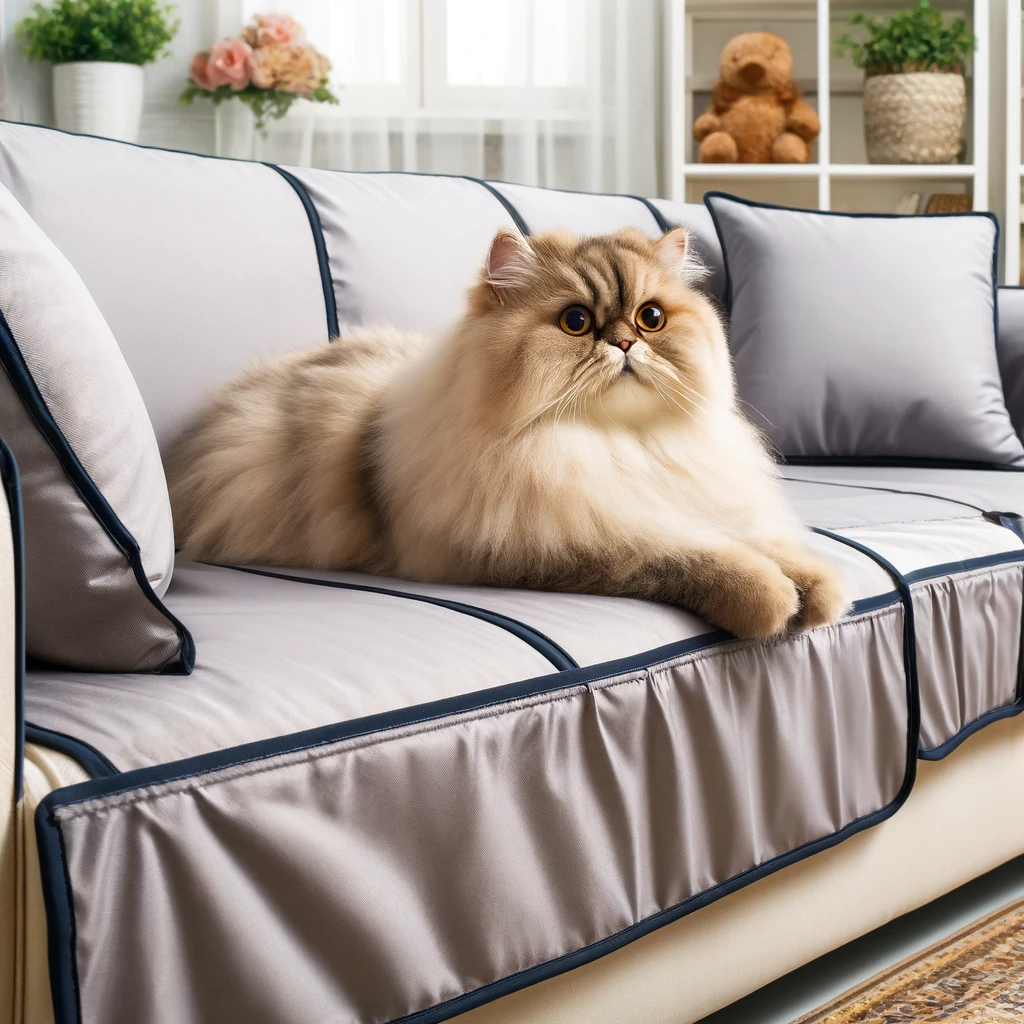
Tip 5: Use Deterrents
There are several deterrents available on the market that can discourage Persian cats from scratching certain areas of your home.
These include sprays containing bitter apple or citrus scents, double-sided tape, or motion-activated alarms.
Spray the deterrents on areas where your cat tends to scratch or apply the tape to furniture corners. The alarms will emit a loud noise when your cat approaches the protected area, which can be effective in training them to avoid scratching.
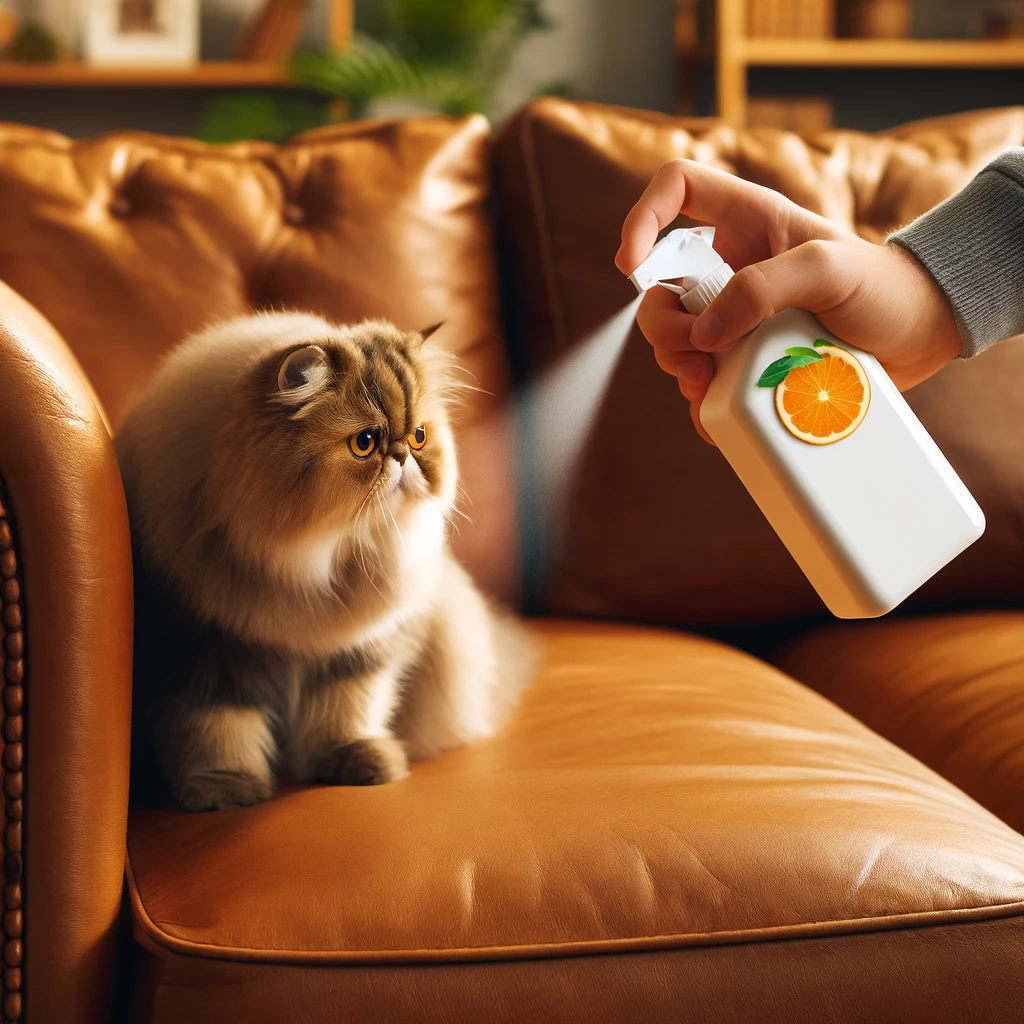
Tip 6: Train Your Cat
Training your Persian cat not to scratch furniture takes time and patience but is worth the effort in the long run. Positive reinforcement techniques such as treats or praise for good behavior can be effective in teaching your cat what is and isn’t acceptable behavior.
Tip 7: Provide Alternative Surfaces
In addition to providing scratching posts, it’s essential to provide alternative surfaces for your Persian cat to scratch.
This can include cardboard boxes or pieces of wood that they can scratch without causing any damage.
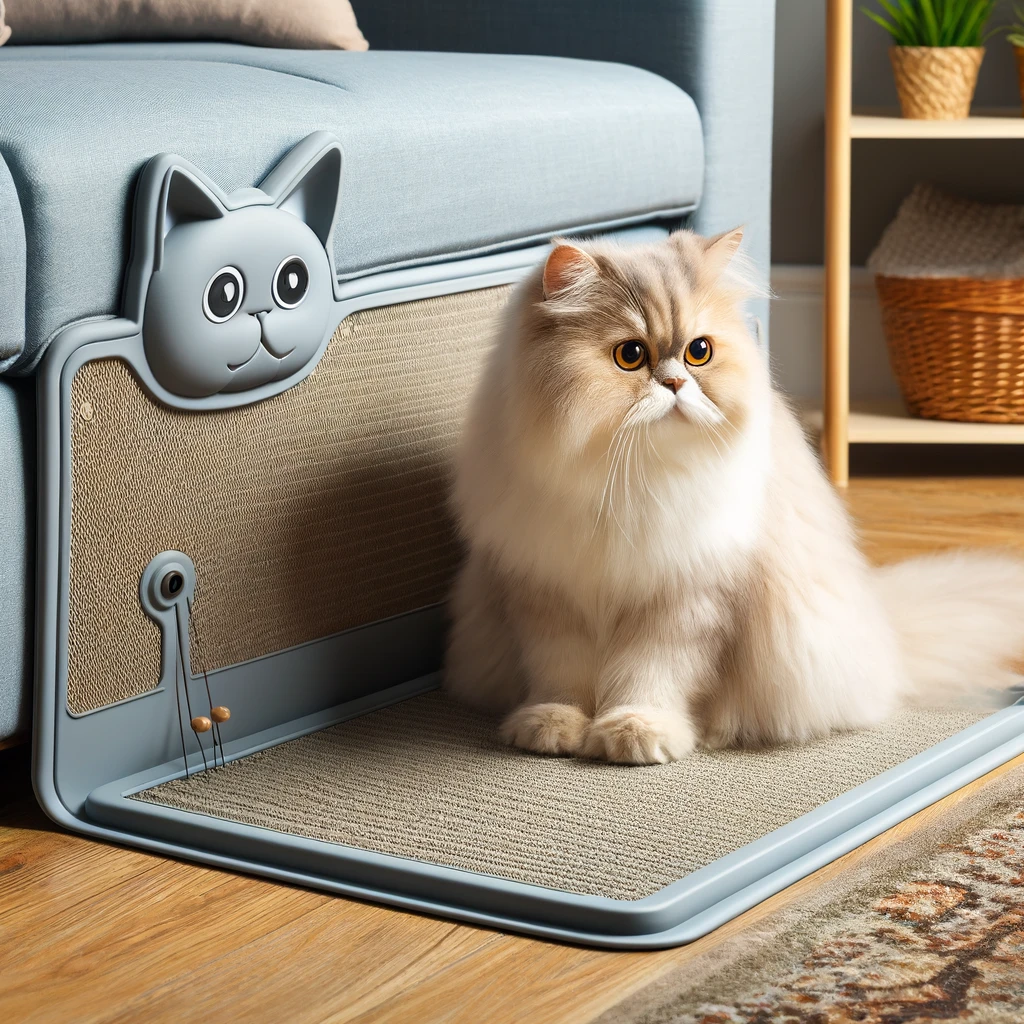
Tip 8: Use Double-Sided Tape
Double-sided tape is an inexpensive and effective way to protect furniture from scratches caused by cats. Simply apply the tape to the areas of the furniture that your cat likes to scratch, and they will quickly learn that it’s not a suitable surface for scratching.
Tip 9 : Provide Plenty Of Toys and playtime
Persian cats are intelligent and playful animals that require plenty of mental and physical stimulation. Providing them with a variety of toys and playtime can help reduce their urge to scratch furniture out of boredom or frustration.
Interactive toys such as puzzle feeders or laser pointers can keep your cat entertained for hours while also providing exercise and mental stimulation.
Tip 10 : Supervise Your Cat
Finally, supervising your Persian cat when they are around furniture is crucial in preventing any damage. If you notice them starting to scratch, redirect their attention towards an appropriate surface or toy.
In conclusion, protecting your furniture from being scratched by Persian cats requires a combination of preventative measures and training techniques.
By following these steps consistently over time, you can enjoy the company of your Persian cat without worrying about them damaging any of your belongings.
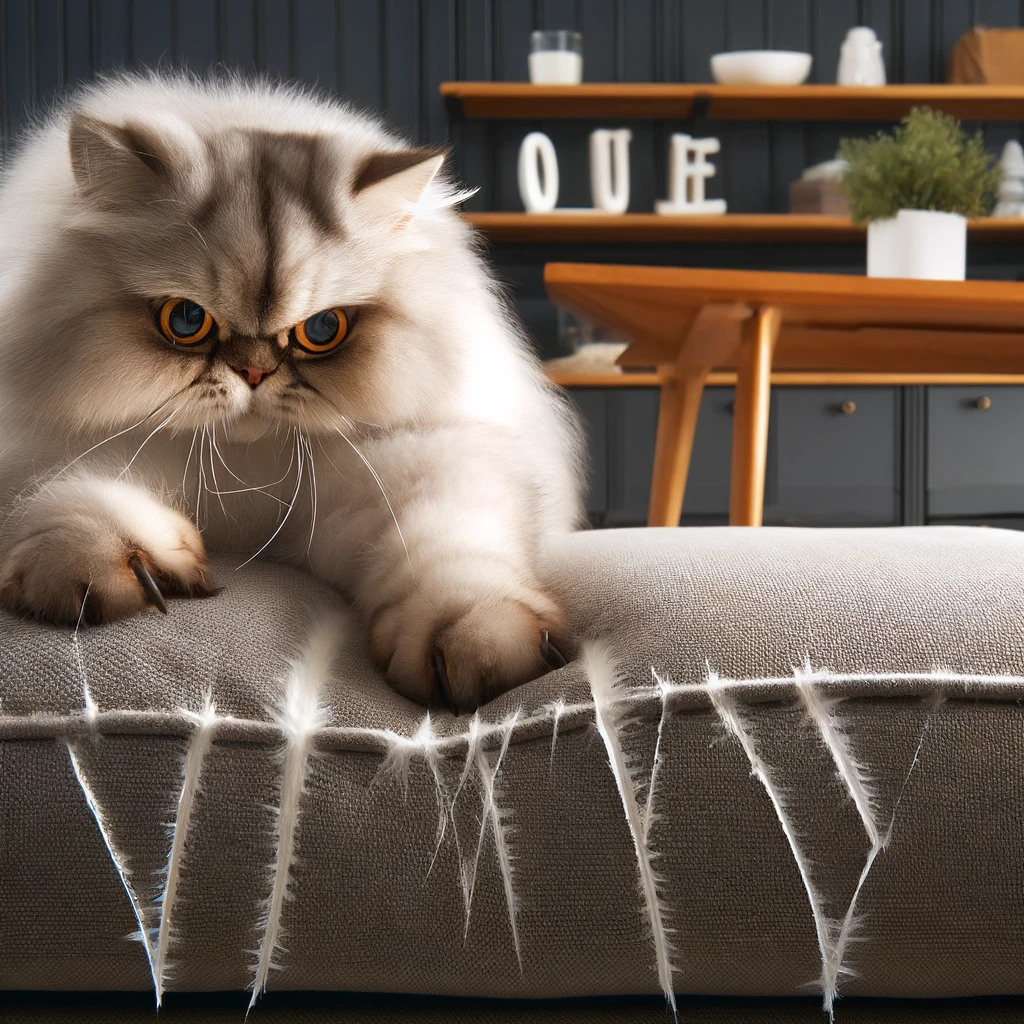
Is declawing your Persian cat to prevent furniture scratching an ethical option?
As a pet owner, it is important to consider the ethical implications of any decision we make for our furry friends. One such decision that has been a topic of debate among cat owners is whether or not to declaw their Persian cats.
While some argue that declawing is necessary to protect furniture and prevent scratching injuries, others believe it is an inhumane practice that causes unnecessary pain and suffering for the animal.
Declawing involves amputating part of a cat’s toes, which can result in chronic pain and discomfort for the animal. It can also lead to behavioural issues such as litter box avoidance and aggression due to increased stress levels.
Moreover, there are alternative methods available for preventing destructive scratching behavior without resorting to declawing.
Providing appropriate scratching posts and regularly trimming your cat’s claws can help redirect their natural urge to scratch while keeping them safe from injury.
Furthermore, many countries have already banned declawing as an unethical practice. In Canada, for example, veterinarians are prohibited from performing non-therapeutic declaws under provincial animal welfare laws.
Similarly, several European countries have also banned the procedure due to concerns about animal welfare.
Another argument against declawing is based on its impact on a cat’s natural instincts and abilities. Cats use their claws not only for self-defence but also for hunting prey and climbing trees or other structures.
Declawing can severely limit a cat’s ability to perform these natural behaviours, which can lead to boredom and frustration.
Additionally, declawing can have long-term health consequences for cats. The procedure can cause chronic pain and discomfort, which can lead to changes in gait and posture that may result in arthritis or other joint problems later in life.
Finally, it is important to consider the ethical implications of declawing from a moral standpoint. As pet owners, we have a responsibility to ensure the well-being of our animals and protect them from unnecessary harm or suffering.
Declawing goes against this principle by subjecting cats to an invasive procedure that causes pain and discomfort without any clear benefit for the animal.
Ultimately, as responsible pet owners, we must prioritize the well-being of our animals above all else and avoid any practices that cause unnecessary harm or suffering. Therefore, it is not ethical to declaw your Persian cat.
Final Thoughts : Do Persian Cats Scratch Furniture ?
In conclusion, Persian cats are notorious for their love of scratching furniture. However, there are alternative furniture protection methods that can be used to prevent damage.
From scratch pads to double-sided tape, there are plenty of options available to keep your furniture safe from those pesky claws.
Training and behavioral modification techniques can also be effective in curbing a cat’s scratching habits. Positive reinforcement and redirecting their attention can go a long way in preventing them from destroying your favorite couch.
While it may seem like an uphill battle, with the right tools and techniques, you can protect your furniture from even the most determined Persian cat. So don’t give up hope just yet!
References:
1. Bradshaw, J.W.S., Casey, R.A., & Brown, S.L. (2012). The Behaviour of the Domestic Cat (2nd ed.). CABI.
2. Ellis, S.L.H., Rodan, I., Carney, H.C., Heath, S.E., Rochlitz, I.J., & Shearburn L.D. (2013). AAFP and ISFM Feline Environmental Needs Guidelines.
3. Landsberg G.M., Hunthausen W.L., & Ackerman L.J.(2013). Handbook of Behavior Problems of the Dog and Cat (3rd ed.). Elsevier Health Sciences.
4. Overall K.L.(2013). Manual of Clinical Behavioral Medicine for Dogs and Cats (1st ed.). Elsevier Health Sciences.
5. Radosta L.A.(2018). What Cats Want: An Illustrated Guide for Truly Understanding Your Cat(1st ed.).
6.. American Society for the Prevention of Cruelty to Animals (ASPCA). (n.d.). Scratching: How to Keep Your Cat From Scratching Furniture. Retrieved from https://www.aspca.org/pet-care/cat-care/common-cat-behavior-issues/scratching
7.Cornell Feline Health Center. (2017). Declawing Cats: Alternatives to an Inhumane Procedure. Retrieved from https://www.vet.cornell.edu/departments-centers-and-institutes/cornell-feline-health-center/health-information/feline-health-topics/declawing-cats-alternatives-inhumane-procedure
8. PetMD Editorial Team. (2021). How to Keep Your Cat From Scratching Furniture.
